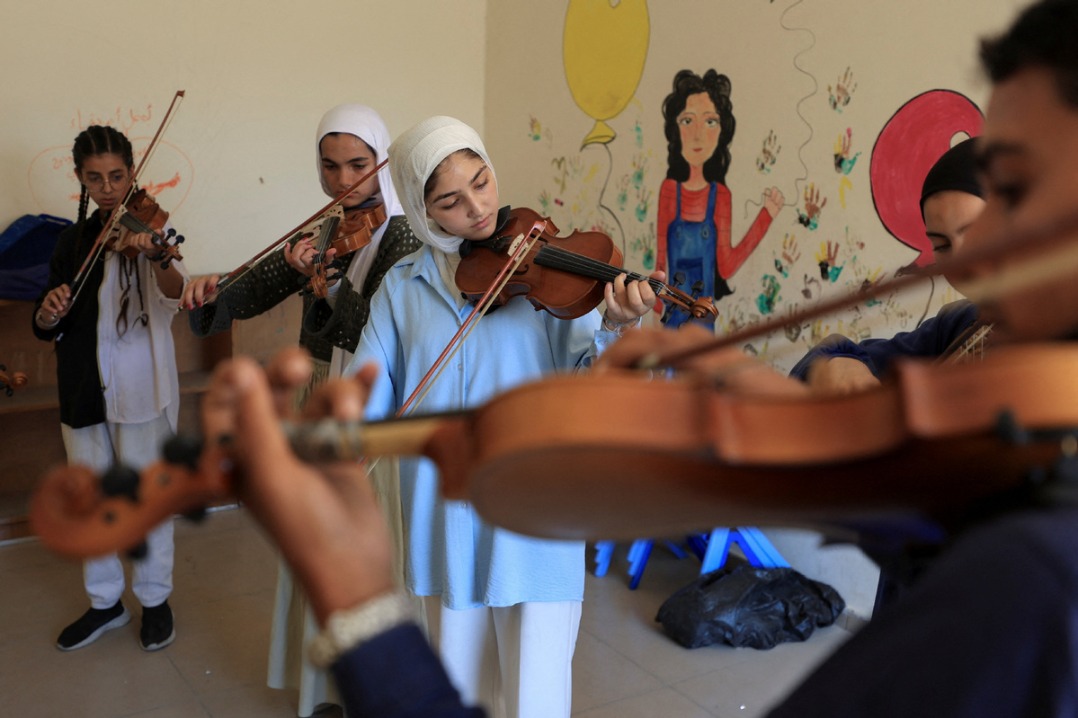Reforms are secret of China's success


The past seven decades have turned out to be an extremely successful period economically for the People's Republic of China, which will celebrate the 70th anniversary of its founding on Tuesday.
Its real GDP grew from $44.4 billion in 1949 to $13.1 trillion in 2018, almost 300 times, with an average annual growth rate of 8.1 percent. The real GDP per capita grew from $82 in 1949 to $9,415 in 2018, or 115 times, with an average annual growth rate of 6.8 percent.
China has become the second-largest economy in the world after the United States. It overtook Japan in 2006. In 1949, China's GDP was less than 2 percent of the US GDP; in 2018, it was 64 percent.
The GDP started to show consistent growth after China launched reforms and opened up the economy in 1978. The growth rate accelerated after its accession to the World Trade Organization in 2001. China has become the world's second-largest trading nation, after the US. Japan made good economic progress from 1949 until 1990, when its economy began to stagnate. It is yet to fully recover. The US economy grew steadily during the period, except during the Great Recession, a period of economic decline in world markets, triggered by the global financial crisis of 2008-09.
While China's annual growth rate fluctuated wildly before the economic reforms and opening-up in 1978, it has not had a single year of negative growth since then. It has grown at a higher rate than the US every year since 1978, and also Japan, except for 1989 and 1990. Japan had a higher rate of real GDP growth than the US until 1974, when the first oil shock occurred. But since 1991, Japan has had slower growth compared with China and the US.
With the rapid growth of the economy, the quality of life in China improved tremendously over the past 70 years. One such indicator is the life expectancy, which has more than doubled, from 35 years in 1949 to 77 years in 2018.
The fastest improvement in life expectancy occurred between 1961 and 1970(due in part to the efforts of "barefoot doctors", or farmers with basic medical training, in rural areas). Life expectancy is expected to rise gradually as a result of higher disposable incomes per capita, urbanization and better healthcare.
What is even more remarkable is the success in the eradication of poverty, a major objective of the government. That, along with environmental preservation and protection, are the two targets that are still mandatory in the Chinese National Economic and Social Development Plan.
According to the poverty standards of 1978, 2008 and 2010, even if we use the most stringent standard-the 2010 standard-almost 100 percent of China's population would have been below the poverty line in 1949. The 2010 standard says a person should be earning at least 2,300 yuan a year, or slightly more than $1 (at 2018 price) a day. By 2018, the poverty rate declined to 1.7 percent. Poverty is expected to be completely eradicated by 2020, as measured by the 2010 poverty standard.
There is probably no other major country that takes poverty eradication as seriously as China. It is the tradition and practice of the Communist Party of China to take into account the interests of all stakeholders when it undertakes reforms.
During the transition from a centrally planned economy to a socialist market economy, China employed the "dual track" approach, which allowed the mandatory central plan and the free market to coexist, thus protecting all the preexisting economic rights and preventing the emergence of "losers" from the reform. For example, when the household contract responsibility system was introduced in the agriculture sector, households were required to continue to deliver the fixed quantity of food grains to the government under the central plan before they could participate in the free market. This allowed the government to continue to supply food grains in urban areas.
While China has benefited greatly from globalization, it also has realized that the free market will not compensate the "losers" by itself. Thus, the Chinese government has taken active steps to compensate the "losers" from economic globalization and to help those people who have been left behind. While the income disparity has increased in China in recent years, everyone is comparatively better off now, thanks to reforms. That is the secret of China's success.
The author is the Ralph and Claire Landau Professor of Economics at The Chinese University of Hong Kong. The views do not necessarily reflect those of China Daily.
































